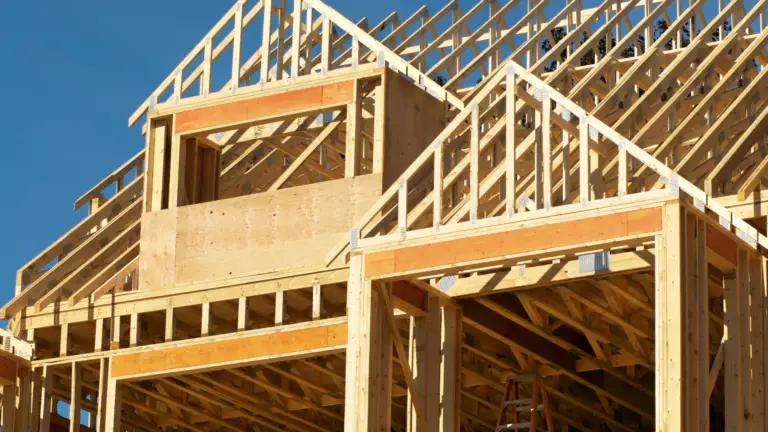Wood, a timeless building material, has played a pivotal role in construction for centuries. Its enduring popularity is particularly pronounced in the United States, where timber has consistently been a preferred choice for various building projects. In this comprehensive blog, we will take an in-depth look at the world of timber construction and explore the multitude of advantages it offers for building endeavors in the United States.
To view AH Construction’s projects click HERE
Cost-Effectiveness:
- Timber’s cost-effectiveness is a persuasive argument in its favor. When compared to alternative materials like steel or concrete, wood often proves to be more economically viable. The lower material costs associated with timber can significantly impact the overall project budget, allowing for more efficient allocation of resources.
- Additionally, the speed of construction with wood is noteworthy. The shorter construction times translate into reduced labor costs, further contributing to cost-effectiveness. This advantage is especially appealing in today’s fast-paced construction industry.
Energy Efficiency:
- Wood’s inherent insulation properties have a notable impact on energy efficiency within buildings. Timber’s ability to maintain stable indoor temperatures reduces the reliance on heating and cooling systems, ultimately leading to energy savings.
- Timber structures complement energy-efficient and sustainable building designs, aligning with contemporary architectural trends and eco-conscious initiatives. The integration of wood into construction can contribute to a more sustainable and energy-efficient built environment.
Aesthetic Appeal:
- Wood’s natural beauty is unparalleled. Its warm and inviting appearance enhances the visual appeal of buildings, creating spaces that resonate with occupants and visitors alike.
- Timber’s adaptability allows for customization, enabling architects and builders to achieve various architectural styles and design aesthetics. Whether aiming for a rustic charm or a sleek, modern look, wood can be tailored to meet specific design objectives.
Structural Versatility:
- Timber’s versatility is evident in its adaptability to various construction methods. From traditional framing to engineered wood products like laminated veneer lumber (LVL) and cross-laminated timber (CLT), wood can accommodate a wide range of structural requirements.
- This adaptability extends to the diversity of building types that can incorporate timber as a primary construction material. From residential homes and multi-family housing to commercial spaces and educational institutions, timber’s versatility knows few bounds.
Durability and Longevity:
- The longevity of timber structures, when properly treated and maintained, is a testament to wood’s durability. With the right care, wood can endure for generations, providing lasting value to property owners.
- Notably, timber structures often exhibit resilience in the face of natural disasters, such as earthquakes and storms. Engineered wood products like CLT have demonstrated exceptional performance in seismic events, highlighting the potential for timber to enhance building safety.
Local Sourcing and Economic Benefits:
- The United States boasts an abundant supply of timber, contributing to the vitality of local economies. By sourcing wood locally, builders not only support regional industries but also reduce transportation costs and the associated carbon footprint.
- Embracing locally sourced timber is a sustainable practice that aligns with eco-conscious construction principles. It promotes responsible land management and fosters a sense of environmental stewardship.
Fire Resistance and Safety:
- Addressing concerns about fire safety, engineered wood products like CLT have demonstrated exceptional fire resistance capabilities. These innovative wood products can withstand fire for extended periods, providing valuable time for evacuation and emergency response.
- When designed and treated correctly, timber structures meet stringent safety standards and building codes, assuring occupants of their safety.
Regulatory and Certification Support:
- Various certifications, including the Forest Stewardship Council (FSC), offer assurance of responsible wood sourcing. The FSC certification, in particular, signifies a commitment to sustainable forestry practices, which align with broader environmental conservation efforts.
- Building codes and regulations in the United States are structured to accommodate safe and sustainable timber construction. Compliance with these codes ensures that timber structures are not only environmentally responsible but also meet rigorous safety standards.
To view AH Construction’s projects click HERE




